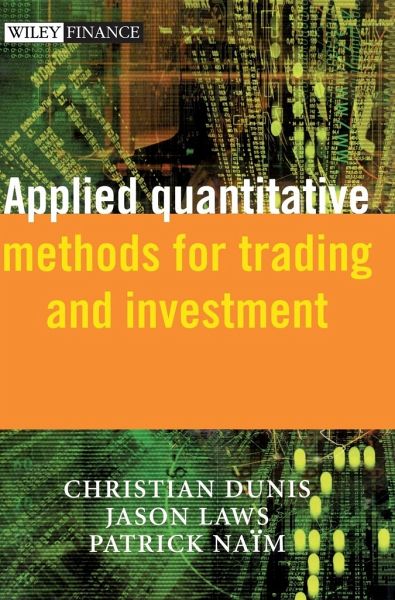
Applied Quantitative Methods for Trading and Investment

PAYBACK Punkte
82 °P sammeln!
This book provides a manual on quantitative financial analysis. Focusing on advanced methods for modelling financial markets in the context of practical financial applications, it will cover data, software and techniques that will enable the reader to implement and interpret quantitative methodologies, specifically for trading and investment. Includes CD-ROM with samples of different software used in the various models._ Includes contributions from an international team of academics and quantitative asset managers from Morgan Stanley, Barclays Global Investors, ABN AMRO and Credit Suisse First...
This book provides a manual on quantitative financial analysis. Focusing on advanced methods for modelling financial markets in the context of practical financial applications, it will cover data, software and techniques that will enable the reader to implement and interpret quantitative methodologies, specifically for trading and investment. Includes CD-ROM with samples of different software used in the various models.
_ Includes contributions from an international team of academics and quantitative asset managers from Morgan Stanley, Barclays Global Investors, ABN AMRO and Credit Suisse First Boston.
_ Fills the gap for a book on applied quantitative investment & trading models
_ Provides details of how to combine various models to manage and trade a portfolio
_ Includes contributions from an international team of academics and quantitative asset managers from Morgan Stanley, Barclays Global Investors, ABN AMRO and Credit Suisse First Boston.
_ Fills the gap for a book on applied quantitative investment & trading models
_ Provides details of how to combine various models to manage and trade a portfolio




